When code meets CRISPR: Postdocs innovating in brain science
Summary:
Two postdoctoral fellows working in the Li Lab are using different tools—computational modeling and gene-editing technology—to collaboratively unlock a better understanding of the developing brain.

Science rarely happens in isolation. In the lab of Dr. Yun Li at The Hospital for Sick Children (SickKids) Research Institute, two postdoctoral fellows — Drs. Mai Ahmed and Sridevi Venkatesan — are using different scientific approaches to answer the same question: how does the human brain develop, and what happens when that process is disrupted?
This story is part of PROPEL, a series exploring the life and research of postdoctoral fellows at SickKids.
Their day-to-day couldn’t look more different: Ahmed spends her days at the bench in the lab, using stem cells and gene-editing tools like CRISPR to examine the effects of specific gene changes on cells. Venkatesan, meanwhile, writes complex computational models to predict how those genes behave in early brain development. In practice, their work in the Developmental, Stem Cell & Cancer Biology program is deeply interconnected: what one discovers can shape or refine the direction of the other’s next experiment.
With a shared focus of autism spectrum disorder (ASD), they’re part of a vibrant postdoc community at SickKids, fueling insights into the genetic underpinnings of neurodevelopmental disorders.
Meet the researchers
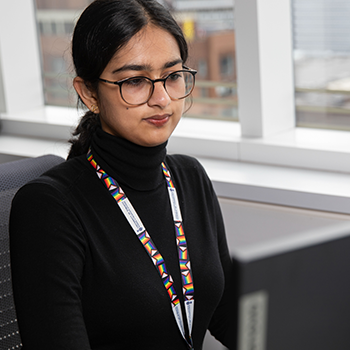
Dr. Sridevi Venkatesan came to Canada from India to complete her PhD at the University of Toronto in physiology, where she studies animal models of neurobiological conditions. A 2023 recipient of the prestigious Schmidt Science Fellowship, she shifted her focus to computational biology and now works on building algorithms to identify patterns of genetic signaling in developing brain cells that are disrupted in ASD. Publications include Nature, Current Topics in Behavioral Neurosciences and The Journal of Neuroscience.
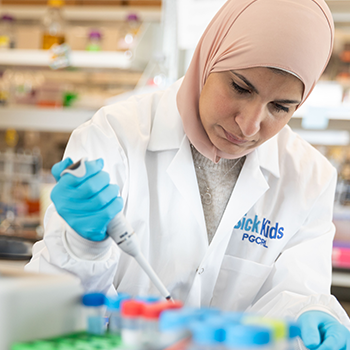
Dr. Mai Ahmed completed her PhD in Japan at the Okinawa Institute of Science and Technology, studying the mechanisms behind retinal development. Originally from Egypt, she moved to Canada with her husband (also a postdoctoral fellow at SickKids) in 2022 and received a Human Frontier Science Program Long-Term fellowship in 2023. Today, she uses CRISPR and stem cell technology to study the genetic factors that underlie human-specific brain development and neurodevelopmental conditions. She serves as the international co-lead on the Postdoctoral Advisory Committee (PDAC) at SickKids, helping international postdocs transition to life in Canada. Publications include in Frontiers in Cell and Developmental Biology, Cell Reports and eLife.
Collaboration in action
What connects your research?
Ahmed: Sridevi and I have similar interests about how the brain develops, but we are using different ways to address them. I approach research experimentally, combining stem cell research with gene editing CRISPR technology and single cell RNA sequencing, to study how cells are affected when we edit specific genes.
Venkatesan: We know that the human brain forms from an embryo and then develops, over months, from a fairly homogeneous population of stem cells to the enormous diversity of cell types that you have in a newborn brain. In my work, we’re trying to mimic these processes in organoids – collections of cells grown in a petri dish that mimic human organ structures. I am working on algorithms that can help predict how stem cells mature, to better understand how the brain forms. Where my work overlaps with Mai’s is developing computational models to predict the effects of knocking out particular genes, which informs the experiments she does.
Why did you choose to work at SickKids?
Ahmed: I really wanted to join an institute that did both research and medicine, where I could get insights from physicians and see what basic research needs were possible to fulfill through our work in the lab. SickKids is an amazing hub for communication between the hospital and research institute, and we see patients and talk to physicians every day – just by being on site.
Venkatesan: At SickKids, there are a lot of nice touches that make you feel like you are part of a community, and a lot of events! There is also a lot of training available, not just training in technical skills, but also training in soft skills as well, for your career development.
From PhD to postdoctoral research, what’s the transition been like?
Ahmed: When I finished my PhD, I felt that I knew a lot and was ready to use what I learned in my work. But one of the things I realized during my postdoc is that learning doesn't end at graduation. I think I was surprised by how much I had to learn, especially when I started working with a different model, in a different field. Over time, I’ve embraced the idea that I will never stop learning.
Venkatesan: Mentorship has made a big difference for me. I am co-supervised by Jesse Gillis, a computational biologist with an interest in neuroscience, at the Donnelly Centre for Cellular and Biomolecular Research. I split my time between labs. At SickKids, I mentor students to share my computational knowledge. I hope that the students I mentor can learn mathematical and statistical concepts from me without being scared or overwhelmed by some of the depths that this work can take.

Inspired by Sridevi & Mai? Do your post-doc at SickKids
The Research Training Centre (RTC) offers trainees hands-on opportunities to contribute to some of the most important research projects in Canada and to work with top scientists.

Learn more about postdoctoral research at SickKids
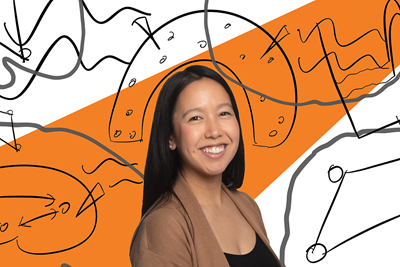
Exploring the developing brain with Dr. Julie Sato
From using wearable neuroimaging technology to taking hikes with her sheepadoodle, Dr. Julie Sato is a postdoctoral fellow pursuing research breakthroughs and work-life balance.
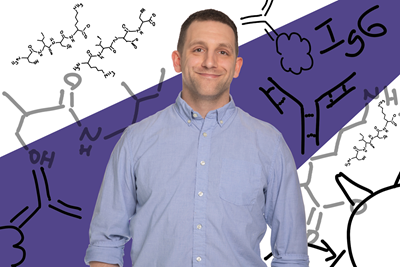
A quest for a new malaria vaccine with Dr. Danton Ivanochko
A dedicated scientist and father of two, Dr. Danton Ivanochko is part of a global effort to prevent malaria.
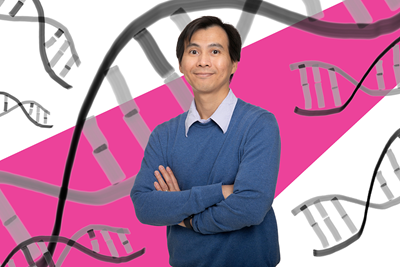
Breakthroughs at the bench with Dr. Toan Nguyen
Meet the postdoctoral fellow whose research offers a promising approach for quickly predicting a rare genetic condition.

